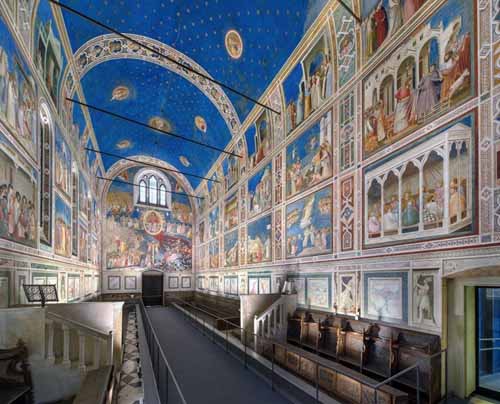Italy’s Padua celebrates inclusion on UNESCO’s list of World Heritage sites

Rome: A complex of eight historic clusters of buildings in the northern Italian walled city of Padua was added to the United Nations Educational, Scientific and Cultural Organisation (UNESCO) list of World Heritage sites on Saturday.
The decision was made during the UNESCO World Heritage Committee’s 44th session held online and chaired from Fuzhou, China.
The UNESCO recognized a group of eight religious and secular complexes called “Padua Urbs Picta” within the walls of Padua (the city is called “Padova” in Italian).
The buildings are home to what UNESCO called “a selection of fresco cycles painted between 1302 and 1397 by different artists for different types of patrons and within buildings of diverse functions.” The development, highly anticipated in Italy, was a cause for celebration around the country.

“Receiving this recognition brings us great joy, and also great responsibility towards the whole world. These frescoes are part of the identity of the city and the people of Padua are proud of this asset, which will now be shared with the world. For us, this prestigious recognition today marks the start of a new commitment to the world,” Sergio Giordani, the city’s mayor, told Xinhua in a telephone interview.
Lucia Borgonzoni, Italy’s under-secretary for cultural heritage, said “this is a very special day for the community of Padua and I know how important it is to finish this path which was long and articulated.”
“Now after this recognition, there are going to be nice moments but also responsibilities not only in front of the citizens of Padua but in front of the whole planet. The world is watching Padua,” said Borgonzoni.
Andrea Colasio, council member of Padova, said the city’s UNESCO path started 20 years ago when the city started reflecting on its sources and memories. “Padua demonstrated today that in the 14th century it was an important art capital. This recognition from UNESCO will have for sure a deep impact on the tourist flows and also on its international image.”
Giorgio Andrian, the city’s project manager for its UNESCO candidacy, said that “this is the maximum we could have dreamed…From Monday we will have to start working on how to manage this ‘honor’.”
An Italian news site, the ArTribune, said: “What we have known ourselves is now recognized by the world: Padua is officially part of the world’s cultural heritage.” The Italian news agency ANSA reported that “the marvels of Padua are recognized.”
Saturday’s developments came two days after UNESCO decided not to put the canal city of Venice, which is on the world heritage list since 1987, on its “danger list,” one step away from being removed from the list altogether.
The World Heritage Committee session reviews candidates for entry to the list and examines the state of conservation of existing sites. The inscription is scheduled to continue through July 28.





